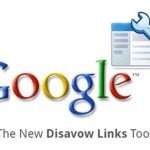Discover the best ways to improve subscriber engagement for your next campaign by using our tips and the right mass email software.
Are you having difficulty engaging with your subscribers through your mass emails? If you are, then you’ve made it to the right place! Today we’re going to be discussing some of the best strategies to heighten engagement and get the best results from your next campaign.
When it comes down to it, you may have a robust address list and be able to craft a compelling email, but that doesn’t matter unless your subscribers are engaging with your messages. If your subscribers aren’t engaging with your messages, then there may be an underlying problem with your emails.

Thankfully, with the right mass email software, you can easily pull key metrics that will help you determine different strategies. Depending on whether you are sending mass emails in Gmail, Outlook, or using another method entirely, our tips will help you understand your data and make the appropriate changes to re-engage your audience. Ready to start seeing results from your mass email campaigns? Then let’s get started!
What is an Engagement Report?
Before we get too far into using mass email software to improve your metrics, let’s talk a little bit about how to read an engagement report.

Reporting via your mass emails software is your greatest asset.
The hard truth about sending mass emails? Unless your audience is regularly engaging with your content, you won’t see any results. Over time, this will become evident in the number of conversions and the statistics coming from your mass email software.
But, many people-especially those who are new to mass emails-aren’t quite sure how to read these metrics and make improvements. That’s why we’re discussing how to read engagement reports from your mass email software-let’s dive in!
Your engagement report pulled from your mass email software will show the addresses on your list and assess their quality. The “quality” in this case refers to if and how your audience is engaging with your messages. It will also show you how each member of your address list has interacted with your messages over time.
This data is exceptionally important for both optimizing your address list and retargeting your campaign strategy if needed.
How Does the Report Rank Engagement?
Each mass email software calculates engagement a bit differently. However, going by open rate is a good place to start.

It is difficult to understand metrics from your mass email software without breaking the data into segments.
When you pull your engagement ranking from your mass email software, your metrics will be based on open rates in most cases. Your open rate refers to the number of people who have opened your email when it was delivered. It does not measure how many people interacted with your email after opening it.
If your specific campaign goal is to increase traffic to your site, then it may be better to pull click-through rate metrics instead. For the sake of this section, we are going to only be discussing open rates within an engagement report. We’ll get to total engagement metrics a bit later.
Once you’ve pulled the data, there are a few ways that you can look at your engagement report. You should start by breaking your audience into categories. Depending on the mass email software you choose, you may have the option to automatically categorize your data. We recommend organizing your address somewhat like this.
- Group 1 Engaged – An engaged audience member will open your emails over 50% of the time.
- Group 2 Partially Engaged – The partially engaged audience member will open your messages anywhere from 20% to 50% of the time. This group is engaged, but there is room for improvement.
- Group 3 Incidentally Engaged – This group will open your messages less than 20% of the time. However, they have still opened your messages. This audience is an excellent opportunity for a re-engagement campaign. We’ll get to that a little bit later, too.
- Group 4 Not Engaged – This group has not engaged with your messages yet. This presents a good opportunity to reexamine your address list and verify if your addresses are valid or are still worth keeping around.
Now that we know a little bit more about how engagement reports work, it’s time to explore the other metrics found in an engagement report and how you can use them to inform your strategy.
How to Read an Engagement Report
After using your mass email software to pull your report, you need to be aware of the most important information points.

Raw data is difficult to understand without doing your research.
Beyond the four groups we just discussed, some more data points are extremely important to email marketers. The first thing you want to address after examining your initial grouping is the aggregate distribution summary.
Aggregate Distribution Summary
The aggregate distribution summary will show you data points for all engagement that has come from only the last 30 days. This shows how recently your subscribers have been engaged and helps you separate those addresses from those who have not engaged recently.
It is important to remember that while reading these metrics, you can expect half of your audience to be either engaged or partially engaged. If more than a quarter of your addresses fall into the not engaged category, you should examine your address list and make sure all of your addresses are indeed valid and up to date.
Statistics Summary
Unlike the aggregate distribution summary, the statistics summary will show you your total open rate over the last 30 days. This metric simply calculates how many of your messages were opened divided by the total number of messages sent.
For this metric, a good number to shoot for is a 30% open rate. If your open rate is much lower than that, it is likely that either you can improve on your last campaign or-once again-your addresses are invalid or out of date.
Engagement and Profile Age
The next most important set of data that you should examine is the engagement rate over time. As you send emails to your address list, your addresses may become out of date or your messages may become irrelevant to your audience. You may even need a re-engagement campaign to encourage your audience to interact with your message.
This is an especially important set of data to help you determine if there is a specific point in your campaigns where your audience disengages from your messages. If you can find a definite weak spot in your recent campaigns, then you can take steps to further optimize your messages in the future.
This could be anything from altering your copy in certain types of messages to providing your audience with exclusive offers at the point where many have disengaged in the past. Not only that, but you can also use these data points to show you which audience members are prime for a re-engagement campaign.
You can pull this report weekly to get a more granular view of how your campaigns are performing. Based on this, you can ensure that you are sending messages to the highest quality recipients in your address list and identify which email addresses that are less likely to interact with your messages so you can clean your email list.
Open Rate and Profile Age
Just like the data set we just discussed, open rate and profile age metrics pulled from your mass email software can inform your audience engagement over time. However, instead of total engagement, it only measures your open rate.
As we discussed at the beginning of the article, your open rate is the best way to measure your audience’s interest. While the other data sets are important, your open rate shows you exactly when a recipient begins ignoring your message.
By carefully examining the open rate vs. profile age, you can assess your most recent email flow based on when people in your audience stop interacting with your messages. There may also be a specific profile age where your audience begins to disengage, whether it be after a month, 6 months, or a year.
This is an especially helpful metric for brands that are seasonal or serve a temporary purpose. For example, if you are a company that makes baby clothes, your messages will only be relevant for the amount of time the recipient has very young children. When you examine your open rate vs. profile age, you may find that the majority of your audience will disengage after a year and a half.
Depending on your strategy going forward, you could either stop sending emails to these recipients since they are far less likely to open your message, or you could try to entice them with an email flow specifically designed to re-engage older addresses.
What are the Best Ways to Increase Audience Engagement?
Once you’ve pulled your data from your chosen mass email software, it’s time to move on to strategy.

Find out how you can retain recipients and optimize your address list.
We’ve discussed how the age of a recipient will affect how engaged they are with your content. That’s why it is so important to constantly be examining and refreshing your list with new email addresses. But, there are a few other strategies you can use to increase your total engagements and open rate for your next campaign that we should discuss. First up, we’re talking about how your content influences your engagement and open rates.
Despite not bringing up content in this article yet-content really is key. If you aren’t properly managing your content, then you’ll find that your audience will quickly become disengaged. You have to use your marketing skills and intuition to determine exactly what your audience wants from your business.
Depending on your audience, your business, and how you want your audience to engage with your message-and ultimately your product or service-everyone will have a different content strategy. However, some principles are true for mass emailing across the board.
Create Relevant and Diverse Content
The first strategy is to constantly diversify your content. If your messages are too similar or are offering the same incentive, your audience will quickly become disengaged or unsubscribe. The key here is to keep things interesting for your audience.
An easy way to make sure that your messages remain interesting over time is by focusing on your subject lines. Are your subject lines diverse enough? Are they relevant to your audience?
Do they offer something of value to your audience whether that be news, offers, events, or products? Until you can answer yes, to all of these points, you probably have some work to do on your subject lines.
Your message content should accurately reflect your subject lines as well. It is often a fine line for novice email marketers to trend into clickbait territory. Misrepresenting your messages in the subject line is a great way to get recipients to report your address as spam. When it comes to email marketing, getting marked as spam is to be avoided at all costs!
Another great way that you can keep your content relevant is by establishing email flows. Email flows keep your audience engaged by sending out messages that build up to a target action from the recipient. For example, if you want your recipients to make a second purchase from your website after their first purchase, you can entice them with increasingly attractive offers.
As your audience views these offers coming in, they will be more willing to make a purchase. This is also a great option for those who have abandoned their “cart” in your online store. An abandoned cart presents the perfect opportunity to send reminder emails, discounts on relevant products, or bundle options.
Keeping Up With Your Email List
The last thing you need to consider when you want to improve your metrics from your mass email software and run a successful campaign is your email list. Though we’ve talked at length about how important it is to constantly be updating your email list, we haven’t quite yet approached how you should be updating your email list.
One of the first things you need to do to optimize your email list is to break your list into segments. You should start organizing these groups based on the data pulled from your mass email software.
So, you can use the 4 groups (engaged, partially engaged, incidentally engaged, and not engaged) we listed in the previous section to get started. Once you can get a clear picture of the addresses that are and are not engaging with your messages, you can begin work on your list.
Once you’ve broken your list up into the 4 groups, you should start with the addresses that have not engaged with your content at all. If there are addresses that have never opened or engaged with your messages in any way, it is time to remove those recipients from your list.
It is highly likely that if you continue to email them, they will quickly unsubscribe or will report your account as spam. By removing these addresses, you will increase your email sender reputation as you achieve higher delivery and open rates.
After removing addresses that have never interacted with your messages, it’s now time to move on to the next group-incidentally engaged recipients. This group of recipients as displayed by your mass email software should be further broken down into groups to better optimize your address list.
You should break down your list of incidentally engaged recipients into addresses that have opened an email in the last 90 days and those who have not opened one of your emails in the last 90 days. Once you have these recipients segmented, you can establish re-engagement campaign tactics for each group.
It is important to distinguish between these two groups as different subject lines and body copy will appeal to one group over the other. For example, you might want to send a “We Missed You!” type of subject line, but that wouldn’t make sense to recipients who have recently opened one of your messages.
Once you’ve created your strategy for the two groups within the incidentally engaged addresses, you’re ready to start brainstorming content for a re-engagement campaign.
Depending on your business, there are so many different ways that you can retarget your campaigns and re-engage your audience. We recommend using different tactics until you find one that gets your audience to interact with your messages. Using your mass email software, you can pull metrics on individual campaigns to show you what is working and what isn’t.
Overall, the major takeaway from this article is that an engaged audience is the best audience. When members of your audience become disengaged, you either need to target them to encourage interactions, or say goodbye and work on further building your address list. We hope after reading this you are inspired and ready to start a brand new mass email campaign.
Join 25,000+ smart readers—don’t miss out!









